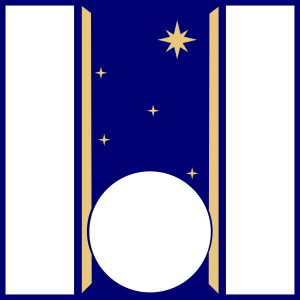NGC4614: a changing-look active galactic nuclei captured by the Telescopio Nazionale Galileo
A group of fifteen students of the University of Florence (Italy), together with three professors (L. Casetti, E. Lusso, and M. Romoli), observed the galaxy NGC 4614 using DOLoRes (Device Optimized for the Low Resolution) installed at the Telescopio Nazionale Galileo (TNG).
These observations were carried out as part of the course "Introduction to astrophysical observations" offered to third-year undergraduates and first-year Master students in Physics and Astrophysics, in the framework of a long-standing collaboration between the Department of Physics and Astronomy of the University of Florence and the TNG.
NGC 4614 is a spiral galaxy at a distance of roughly 250 million light years. It had been recently classified as a Seyfert 1 galaxy, that is, a galaxy hosting an active nucleus (active galactic nucleus, AGN) powered by a supermassive black hole (SMBH) at its center which is accreting mass from the surrounding gas and is oriented such as to allow us to see the close neighborhood of the SMBH. The signature of this neighborhood is the presence of broad components in the hydrogen spectral lines, and in particular in the H-alpha line, that is observed in the red part of the spectrum. These broad features are due to the fast motions of the gas emitting the radiation induced by the gravity of the central SMBH.
After reducing and analyzing the spectrum of NGC 4614, however, the students found that the broad component of the H-alpha line had disappeared. They discovered that NGC 4614 hosts a "changing-look" AGN, i.e., one of the rare examples of AGN transitioning between a "switched-on" and a "switched-off" state. The physical mechanism behind these transitions is still unclear, and this is one of the reasons why any discovery of a new changing-look AGN is important. To gain deeper information, Director's Discretionary Time was granted to follow-up NGC 4614 with DOLoRes, whose outcome confirmed the changing-look nature of NGC 4614.
Remarkably, this is not the first time that students of the University of Florence discover a changing-look AGN while observing at the TNG. It had already happened to the group visiting the TNG in 2019: they discovered the changing-look nature of NGC 4156, which was later reported in a Letter published in Astronomy & Astrophysics (see useful links for more details).
The students' observations at the TNG were made possible thanks to the logistic support of the Fundación Galileo Gailei-INAF and to financial support from the Department of Physics and Astronomy of the University of Florence and from the INAF-Osservatorio Astrofisico di Arcetri.
Link to the paper
Useful links:
- https://www.aanda.org/articles/aa/full_html/2022/11/aa44987-22/aa44987-22.html
- https://www.tng.iac.es/news/2022/11/25/students-at-tng/
- https://www.tng.iac.es/news/2022/05/18/tng-and-the-university-of-florence/
- https://www.unifimagazine.it/studenti-scienziati-osservano-levoluzione-galassia-lontana/
![Comparison between the archival spectrum of the Sloan Digital Sky Survey taken in 2005 (red curve) and the one taken in 2024 at the TNG with the high resolution spectrograph VHR-R (black curve). Wavelengths are the observed ones, and the spectral region reported in the plot corresponds to that of the Hα/[N II] and [S II] line complexes.](images/figure1.png)
Comparison between the archival spectrum of the Sloan Digital Sky Survey taken in 2005 (red curve) and the one taken in 2024 at the TNG with the high resolution spectrograph VHR-R (black curve). Wavelengths are the observed ones, and the spectral region reported in the plot corresponds to that of the Hα/[N II] and [S II] line complexes.

